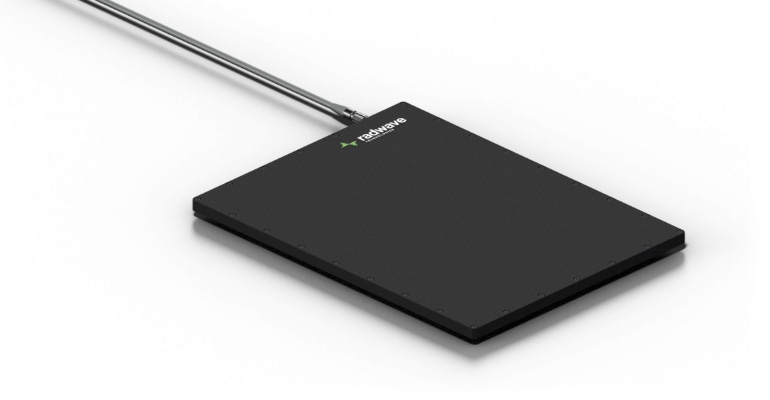EM Tracking Improvements Advance Surgical Navigation for Medical Procedures
Novel EM tracking developments mitigate distortion and enable surgical navigation in a wider range of use cases.
March 24, 2023

Garrett Plank, Business Development Director, Medical, TT Electronics
Electromagnetics (EM) tracking is suited for advanced object tracking during a surgical procedure – enabling clinicians to locate and guide medical instruments inside a patient’s body with no clear line of sight. However, consider the nature of EM tracking technology coupled with metal equipment such as a fluoroscopic C-Arm or the metal framework of a patient’s bed. Their presence may introduce distortion into the EM environment, creating unacceptable distortion of sensor position. Historically, this characteristic limited the types of surgical navigation tools and procedures that EM solutions could power.
As a result of these challenges, clinicians were required to “map” distortion prior to any procedure to accommodate an EM system, as well as selectively minimize the equipment in the room, particularly machinery that is mobile or in motion and therefore cannot be mapped beforehand. Older EM systems also rely on wider electromagnetic frequency bands, creating potential interference with other pieces of critical medical equipment used for patient monitoring and imaging.
Recognizing Distortion
Novel advancement addresses these challenges. Today, EM tracking capabilities allow the antenna to recognize distortion presence, along with relative strength and the direction of origin. While reference sensors placed on the patient’s body will likely sense distortion from the surrounding hospital equipment, the EM tracking platform alleviates this challenge. The system identifies distortion and executes numerous mitigations to ascertain accurate location information from the sensing volume’s full slate of sensors.
“Distortion detection and mitigation break new ground in surgical navigation techniques and applications. We’ve designed our EM System to mitigate various potential interferences so the system can be deployed across a broad range of clinical use cases while maintaining its high accuracy and precision,” said Andrew Brown, CEO, Radwave Industries. “Coupled with advanced electromagnetic sensors, these capabilities increase accuracy and precision to empower physicians with sophisticated, minimally invasive options. TT’s angular wire-winding techniques improve signal intensity and reduce the number and size of coils in a sensor. This method further reduces the size of 6DOF sensors, which in turn helps fuel smaller devices that can reach more critical areas in the human anatomy.”
How does it work? Systems feature three primary components: the control unit, antenna, and 5DOF / 6DOF sensors (Figure 1). Each component can be easily customized to meet the demands of a specific medical device and procedure domain, often using advanced algorithms configured for a particular application at the time of manufacture. The Radwave platform maintains high sampling rates across all sensors, offering high location confidence in as many as 24 sensors.

While off-the-shelf EM systems have long been available, many were developed before today’s strong focus on robotic and minimally invasive surgeries. Many of these legacy systems are confined to handling only fixed and limited navigation volumes. Their common inability to track sensor-driven instruments throughout the entire procedure space also exposes patients and clinical personnel to a more significant amount of harmful X-ray radiation.
Next-generation platforms address this issue with a sizeable standard sensing volume (40 cm x 50 cm x 45 cm) created by its field generator antenna. Sensing volume can be increased, for example, to track a sensor a greater distance away from the antenna – even as the platform’s physical antenna and resulting sensing volume can be shrunk through configuration.
In Radwave’s EM tracking platform (Figure 2), the antenna produces a magnetic field that generates the sensing volume. Its primary design includes a flat panel placed underneath the patient that appears radiolucent (transparent to X-rays) during fluoroscopy.

Sensors,EM Advancements Team Up
Augmenting surgical skill with technology that makes minimally invasive surgical (MIS) procedures possible is good for both patient and doctor. Advancing such procedures and their utility as treatment options in more healthcare scenarios inspires medical device OEMs to evolve image-guided and interventional procedures further. Increased precision, sensor miniaturization, and device/sensor integration contribute to this effort.
Next-generation EM tracking technology presents a platform approach that enables medical device customers to easily incorporate accurate, reliable, and customizable tracking features into their diagnostic and therapeutic products. Sensor integration helps provide a complete EM tracking system to the medical device industry – offering distinct performance advantages, as well as reduced risk and accelerated product development. Developers can focus on their own devices and core competencies while accessing next-generation tracking capabilities and precision. This ability for greater “vision” is poised to empower minimally invasive and robotic techniques in a greater range of procedures in more healthcare disciplines.
You May Also Like



